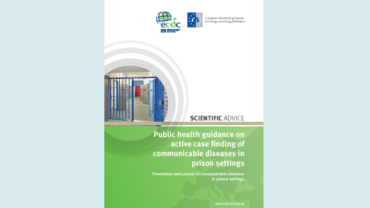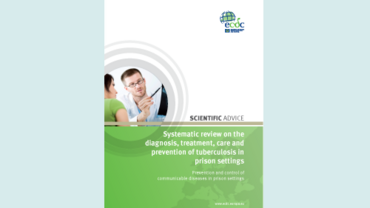Public health guidance on prevention and control of blood-borne viruses in prison settings
This document provides EU/EEA Member States with evidence-based scientific advice on available options, when planning and implementing prevention and control interventions for blood-borne viruses in prison settings.
Executive Summary
Compared with the general public, people in prison in the EU/EEA have a higher burden of communicable diseases such as human immunodeficiency virus (HIV), hepatitis B, hepatitis C, syphilis, gonorrhoea, chlamydia and tuberculosis (TB). Increased disease prevalence in this population is recognised as a significant public health concern, both for people living and working in prisons and for the general population at large because the vast majority of people held in prisons eventually return to their communities. Yet, incarceration may represent a unique opportunity to make adequate healthcare services available to people and target groups that are usually hard to reach when in the community. Effective prevention and control interventions aimed at reducing blood-borne viruses’ transmission and at ensuring entry into treatment and care for those individuals in need are available and may be considered for broader implementation in prison settings.
The successful implementation of evidence-based interventions in prison settings requires an in-depth knowledge of structural hurdles, individual barriers, and the characteristics and behaviours of the prison population.
To this aim, the European Centre for Disease Prevention and Control (ECDC) and the European Monitoring Centre for Drugs and Drug Addiction (EMCDDA) have joined forces to develop a common evidence-based guidance for the prevention and control of communicable diseases in prison settings in the EU/EEA. This document provides EU/EEA Member States with evidence-based scientific advice on available options, when planning and implementing prevention and control interventions for blood-borne viruses in prison settings.
Scope
This guidance focuses on prevention and control measures for high-burden communicable diseases in prison settings, i.e. viral hepatitis B and C, HIV. The target population is adult individuals aged 18 and older detained in prison for custody, remand or awaiting trial. In certain instances, individuals visiting correctional facilities, intervening in various capacities or prison staff may also be included.
Target audience
The target audiences for this guidance are national policymakers, professionals and institutions responsible for the planning of healthcare services in the national/subnational custodial system, professionals and entities responsible for the planning and provision of healthcare services in prison institutions, civil society organisations, and nongovernmental organisations with an interest in prison health. Evidence-based public health guidance Research findings relevant to this guidance have been reviewed and assessed using evidence-based medicine (EBM) principles adapted within a public health framework. To produce the guidance, scientific evidence from peerreviewed and grey literature has been comprehensively assessed, and the results were combined with expert advice and considerations on benefits and harms, human rights, equity, ethics and user preferences. Country specific care models have also contributed to the development of options for implementation to be considered for inclusion in national and subnational public health programmes in European prison settings.










